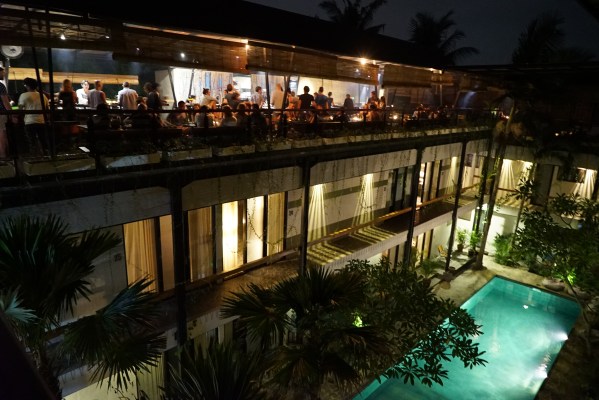This article is from The Technocrat, MIT Technology Review’s weekly tech policy newsletter about power, politics, and Silicon Valley. To receive it in your inbox every Friday, sign up here.
For years, the US has struggled to process all the people who want to come and live here. It’s a slow-rumbling problem that has become a crisis, and over the past 18 months, the number of migrant deaths has surged.
In January, the estimated number of migrants reached a 20-year peakand border facilities started to become overwhelmed. In response, the Biden administration announced stricter measures that look more like Trump-era immigration policies. Just this week, the Biden White House announced a pause on its flagship immigration program, which intended to overhaul the asylum processing system to make it easier to enter the US on humanitarian grounds.
As political pressure increases, money is pouring into shiny new technology as a proposed quick(ish) fix.
Late last year, the agency responsible for policing the border, US Customs and Border Protection (CBP), began asking for proposals for a $200 million upgrade and expansion of a network of surveillance towers that pepper a trail from San Diego, California, to near Port Isabel, Florida. CBP claims that these towers help agents monitor border crossings, intercept human trafficking and drug smuggling, and provide an essential service in a time of crisis, and the program has cost over a billion dollars since 2005.
The towers are equipped with long-range cameras, radar, and laser illuminators, which generate images and other data that the agency’s algorithms process in an attempt to identify people and objects. The agency has indicated that the expanded program will fill gaps in the surveillance infrastructure at the border left by the planned termination of its blimp surveillance program.
But there is mounting evidence that the towers might not be as useful as the agency claims. A recent investigation by the Electronic Frontier Foundation found that these towers have a limited record of success, researchers say they form something more like a dilapidated patchwork than a sophisticated and effective virtual border.
Are the surveillance towers helping a stretched agency effectively manage the swelling traffic, or is the program yet another case of a policing agency sinking tax dollars into unproven and invasive technology without much benefit? Let’s get into it.
What is the surveillance tower program? EFF compiled a map of the towers by physically visiting the border, scouring free satellite imagery from services like Google Satellite and a VR app called Wander, and submitting public records requests. The document it produced is the first public map of the towers. A database provides more information, like the vendor that makes each tower and the technical capacities onboard.
Some of the findings were surprising, like the fact that the towers, which are on US soil, are concentrated around densely populated Mexican cities rather than more remote routes near the desert, which might have fewer patrols. “These cameras are pointed at Mexican neighborhoods,” says Dave Maass, the lead investigator on the project.
According to EFF, the agency plans to triple the number of towers, from 135 today to 442, and upgrade existing towers with new technologies in the next several years.
There are three different types of towers: integrated fixed towers, remote video surveillance systems, and autonomous surveillance towers. They all focus on detecting people from afar, and the makers of the first two types claim that sophisticated cameras, radar sensors, and lasers on the towers can detect a person from over 7.5 miles away. The autonomous surveillance towers are the newest of the group, and though they have shorter range—they can detect a person from 1.7 miles away—they are equipped with movement-detecting radar and detection AI that allows for imagery to be analyzed without human review.
According to the 2023 CBP budget, the agency plans to consolidate all the towers into one interoperable program and ultimately erect a total of 723 towers between the northern and southern border.
But for all the technology, according to Maass, the goal of the program isn’t entirely clear: “I have never heard a very well-articulated explanation of what the goal is. Is it the goal to deter people from crossing the border? Is it to document people crossing the border? Is it to intercept people crossing the border? Like … what is it?”
So why is the program being expanded so drastically? We’re not totally sure, and the agency declined to comment on the record. According to Maass, justifications are rooted in the crisis mentality of agencies responding to migration at the border. “All you hear is Crisis at the border, crisis at the border,” he says, but usually the real crises are happening at points of entry or along common migration routes. “You don’t need a surveillance tower to know that there’s a bunch of asylum seekers camped out under a bridge in El Paso,” he says.
Maass says he found evidence of the US using surveillance towers at the border as early as 1930. But the risks of more advanced, more comprehensive, and more accurate technologies are real, especially when they target border communities.
All the surveillance is disrupting the daily lives of those communities, and a recent report by the ACLU of Texas showed that the mental health of residents was significantly affected by surveillance, whether assumed or real. David Donatti, a staff attorney with the group, says the research showed that “a majority of people avoided going to essential locations like grocery stores, hospitals, polling places, and community centers because they were afraid of encountering border patrol.”
Donatti also points out that migrants overwhelmingly enter the US legally and without trying to evade authorities, so surveillance tech isn’t needed in most cases. As legal options are squeezed, would-be migrants resort to more dangerous ones, but Donatti says more surveillance doesn’t address the root problem.
“We know what the consequences of this massive investment in technology have been. But we don’t have any indication as to its efficacy,” Donatti says.
Maass says the expanding surveillance dragnet brings new questions about how the United States is handling migration. One question he has heard several times: “If there is so much surveillance, why are people dying?”
What I am reading this week
- Of course, I am reading about the leak of highly classified documents from the Pentagon about the war in Ukraine, traced to a now-arrested 21-year-old national guardsman who shared them on a Discord server. This New York Times story about the Discord group is a great read that gets into the digital culture of it all.
- China has proposed new checks on generative AI technologies like the ChatGPT competitor that Alibaba released this week. The proposed regulations include a warning that generated content “should embody core socialist values and must not contain any content that subverts state power, advocates the overthrow of the socialist system, incites splitting the country, or undermines national unity.”
- The New York Police Department has purchased two robot dogs as part of a pilot program to expand its use of technology, which also includes a device that shoots GPS-enabled projectiles to track vehicles and a security robot designed for autonomous patrols. The department’s previous experiment with robot dogs was ended after a public backlash. Let’s see how these new ones fare.
What I learned this week
A new study published by researchers at Stanford and Google found that AI agents, when left to interact in an environment akin to the video game The Sims, exhibited complex, humanlike behavior. This included throwing parties, forming friendships, and establishing routines. The research offers a fascinating look into how AI agents could interact in the future, both with us and with each other.
Note: This article have been indexed to our site. We do not claim legitimacy, ownership or copyright of any of the content above. To see the article at original source Click Here













